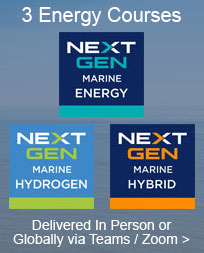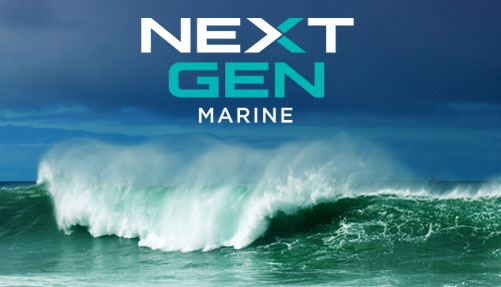Energy Transition for Transport
In 2015 the Paris COP21 (Conference Of the Parties) conference on climate change resulted in 196 nations agreeing to reduce their overall greenhouse emissions and endeavour to limit global warming to less than 2 degrees Celsius compared to pre-industrial levels. In 2021 the COP26 conference highlighted the effects of global warming and pushed for faster emission reductions across all energy sectors.
Commercial vessels can learn from other sectors. Reducing vehicle emissions in the world’s major cities has been a driver for efficient electric propulsion and improved battery power storage. Automotive manufacturers including Tesla and BMW are re-defining energy possibilities for land transport. Battery-electric technology is now transitioning from high performance automobiles to city buses and the future of aviation.
Battery-Electric and Hybrid
As batteries are still evolving, they have significantly less energy density than petrol or diesel fuel. To achieve similar ranges to current vehicles automotive manufacturers in Europe, the Far East and the US have recognised that hybrid technologies such as PHEV (Plug-in Hybrid Electric Vehicle), typically utilising lithium ion battery technologies combined with an Internal Combustion Engine (ICE), will be needed for many years.
In recent years two significant developments have caused many operators of commercial vessels to consider hybrid ICE with battery-electric power and propulsion. Firstly the new emissions laws in coastal sea areas and ports. Secondly the growing land transport market for clean energy technology has enabled manufacturers to adapt high performance batteries and electric motor systems for marine applications.
Retrofitting and Alternative Fuels for ICE
As decarbonization technologies are being developed at a more rapid pace than ever before, retrofitting presents an opportunity for existing and future vessels to be equipped with the latest technologies as they evolve. Retrofitting and identifying retrofit-ready vessels for existing fleets can enable the shipping industry to prepare for the transition to decarbonization.
Shipping and larger commercial vessels have a variety of fuels to choose from, but lack of infrastructure and fuel options away from home ports can be an issue. Alternatives include LNG (Liquefied Natural Gas), LPG (Liquefied Petroleum Gas), biofuels and synthetic fuels. Due to storage and safety considerations, not all alternative fuel types are suitable for both large and smal vessels.
Hydrogen - Methanol - Ammonia
2021 saw first stages of wider maritime interest in Hydrogen and its derivatives Methanol and Ammonia. Due to decarbonisation compliance timelines and emissions regulations, the focus is now on viable hydrogen technology that is available today or in the very near future. Alongside hydrogen powered vessels, portside hydrogen infrastructure will need rapid investment with focus on flexibility and safety.
Hydrogen can be used as a dual fuel in internal combustion engines. Mixtures include hydrogen combined with diesel, biofuel, synthetic fuels. By utlising an electrolyser, hydrogen can be used as a carrier for energy that is then converted into electricity via a fuel cell and battery. Safe hydrogen adoption needs to include all stakeholders from legislators and classification societies to insurers, vessel owners and operators.
Land - Air - Sea Knowledge
NEXT GEN workshops bring together extensive expertise from aviation, automotive and land transport to highlight potential next generation energy technology. This enables experts from other sectors to share innovations and support relevant safety standards. Regulations linked to timelines, plus evidence of global warming, are driving significant changes for the international marine industry.












